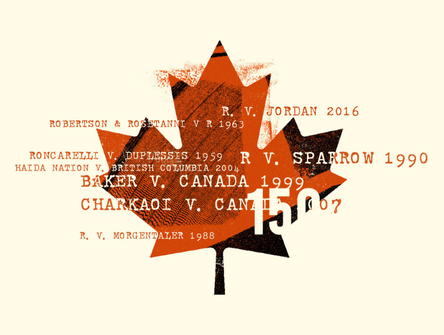An equitable outcome
In Fraser, the Supreme Court of Canada affirmed substantive equality for women under the Charter. But questions remain about the future of systemic discrimination cases.
.jpg?ext=.jpg)
The Supreme Court of Canada’s decision in Fraser v. Canada (Attorney General) last month has been hailed as a rare victory for substantive equality claims under Section 15 of the Charter of Rights and Freedoms, providing a bit of optimism to the legal community. But it’s unclear whether the ruling portends for future claims based on discrimination by adverse effects.
The case involves RCMP employees who temporarily went on job-sharing arrangements being unable to buy back pensionable time. That most of these employees were women who took job-sharing for childcare responsibilities was a contributing factor in the Supreme Court finding adverse effects discrimination – that while the policy was overtly neutral on its face, it had a discriminatory impact.
“The Supreme Court has only favourably decided two adverse effects discrimination claims in the past, and those were quite a long time ago,” says Jennifer Koshan, a law professor at the University of Calgary. “It’s also the first case in which adverse effects discrimination based on sex was recognized by the Court.”
Koshan says it’s an important distinction between other cases where discrimination based on sex was found because adverse effects discrimination claims are more difficult to prove.
“In terms of [Justice] Abella’s decision, the real innovation was getting to the bottom of what you have to prove with adverse effects discrimination, because the Court hasn’t had a lot of experience with that,” says Kerri Froc, a law professor at the University of New Brunswick.
According to Froc, this is the first Section 15 case where the court gives more “meat on the bone” about what adverse effects means. It also discusses the kind of evidence that courts require, both quantitative and qualitative, in showing differences in the quality of treatment based on a group’s circumstances that may constitute adverse effects discrimination.
Another innovation in the ruling is that claimants who can show a disproportionate impact don’t need to prove the underlying reasons.
“If you have a group of women that’s being disproportionately affected, you don’t have to prove as a claimant that it’s because it relates to sex and not to some other characteristic,” says Froc. “She’s making the evidentiary burden a little bit easier.”
Heather Hettiarachchi, who chairs the CBA’s Constitutional and Human Rights section, but who spoke to CBA National in her personal capacity, says that going forward, the biggest question around substantive equality claims will be in determining the comparator group.
“For me, in this particular case, I think there was enough historical evidence to know that people who participate in this job-share program are predominantly women with children, but it might not be the case if the facts are different,” says Hettiarachchi. “You might not have that historical background to help employers to know when they are drawing up policies that may be completely neutral on their face.”
Hence the split between the majority and the dissenting justices, says Hettiarachchi. Froc adds the disagreement was mainly around the notion that expanding substantive equality rights would allow judges to run rampant.
“I take a bit of issue with that characterization by the dissent, because I do think one of the key things about substantive equality – and the court has been clear on this since Andrews – is that sometimes in order to achieve equality of results, you do need to treat people differently,” says Koshan. “You can’t treat everyone the same and expect equality of results.”
“The dissent really wants it confined, and that the state’s responsibility is not to add to the discrimination,” says Froc. “Some of that is justified, because [Abella] dodges giving a robust definition of substantive equality. The court is being really sensitive here. If you used the language of anti-subordination and anti-oppression, people would go crazy.”
Because the majority concluded that there was a section 15(1) breach based on sex, it passed on recognizing parental or family status as an analogous ground for discrimination. Somewhat disappointed, Koshan nevertheless acknowledges Justice Abella’s reasoning that there weren’t enough submissions in support of recognizing a new analogous ground.
“I can see the basis for Justice Côté’s dissent, because she really does say we’re not just talking about sex, but we’re talking about sex as it intersects with caregiver responsibilities or family status,” says Koshan. ‘But because family status has not been recognized as an analogous ground, that was her basis for saying the claim failed”
“I agree more with the majority who has taken an intersectional approach to the ground of sex…and we can consider family status intersecting with the status of sex without having to recognize family status as a ground,” she adds.
Both Froc and Koshan note there is a wealth of Section 15 jurisprudence that seems to go against the more recent decisions that haven’t been disavowed by the Supreme Court in the Fraser decision.
“The McLachlin Court was terrible on Section 15, especially in the early 2000s, and that’s why the dissent is going to town on this,” says Froc. “These old decisions – none of them have been overturned; none of them have received criticism from current members of the court, so you’re going to get these duelling camps.”
“The dissent is exactly right,” says Froc. “Based on the old jurisprudence, this case should have failed, not because there’s no discrimination, but because the framework is terrible.”
Koshan agrees that the majority glossed over past cases that make it difficult to prove adverse effects claims, particularly in not overturning the reasoning in Withler.
Froc says that unless we get to a point where the court is willing to disavow the old cases as being too formalistic, the separate camps will continue to crop up. “At some point, for the greater good, we need to have a commentary on what these older cases have wrought.”


